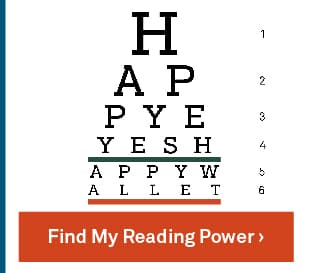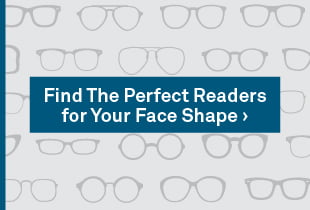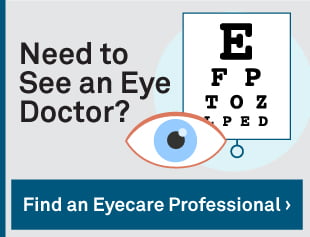
If you already frequently wear contact lenses, perhaps you’ve run into a situation when you feel as if your contact lenses no longer solve all your vision needs. Maybe over the years, reading up-close material has become difficult, and wearing reading glasses over your contacts seems like your only option. Many people who have this problem wonder if it is safe to wear readers in addition to their contacts.
To answer this question, in most cases it is perfectly okay to wear fully magnified or bifocal reading glasses with contacts, as no scientific research has proven it detrimental to one’s eye health. Many people who wear contacts to correct their long-distance vision prefer this option. Wearing reading glasses over their contacts helps them to see up-close more easily.
Bifocal readers have unmagnified lenses which also contain inserts with the magnification of your choice in the lower portion of the lenses.
Which readers and contacts are best for you?
Deciding between contacts and glasses depends on factors such as your lifestyle, personality, and budget. Many people choose to wear both — that way you can decide on a day-to-day basis which option better suits your mood. There are many pros and cons for choosing to wear either one. Our list below will help you weigh the options and make an informed decision about your eye health.
Glasses
| Pros: | Cons: |
| Variety of colorful, fun frames | Close attention must be paid to the style, fit, and color to look good on you |
| Foldable frames are easy to carry | Lenses require upkeep to keep them clean, glass lenses are heavy, and plastic lenses scratch easily |
| Some say glasses are more comfortable | You must keep them in the proper case to prevent damage |
| Glasses are easy to handle and remove from your face | You have poor side (peripheral) vision |
| Although initially more expensive, glasses are higher quality, durable, and last for years | You must replace lenses if prescription changes, and you can misplace or lose glasses easily |
Contacts
| Pros: | Cons: |
| There is a choice between hard or soft lenses | Not durable; contacts easily tear |
| Tinted lenses allow the wearer to change eye color | Contacts are expensive because they are disposable and must be replaced |
| For more natural vision, contacts are worn right on the eye and don’t fog up like glasses do | Contacts are harder to remove and require more maintenance |
| Unlike glasses, they do not change your appearance | You must sanitize them with special solution every time you take them out, which can lead to additional costs |
| Specially designed lenses can treat eye conditions like astigmatism or myopia | If not cared for properly, infection can occur in the eye |
Looking for tips on the best way to clean your lenses? Check out our guide on How to Clean and Maintain Your Eyeglasses ›
All posts are written to be informative in nature, and are by no means a substitute for an optical expert’s advice. Please read our full disclaimer.
Disclaimer: All references to “bifocals” herein refer to readers having unmagnified lenses containing a “bifocal style” single powered reading glass insert located in the lower portion of the lenses.





0 Comments